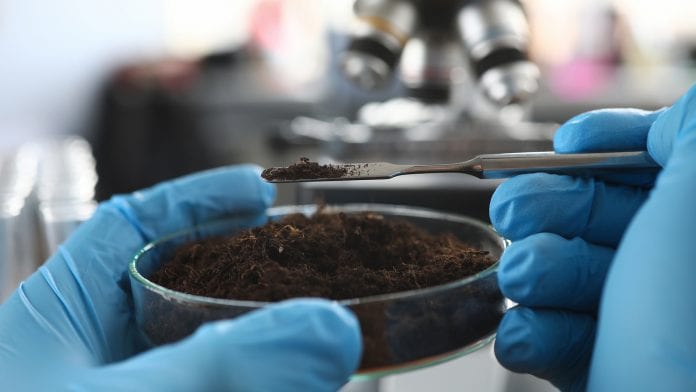
In a new discovery, a team of scientists have shown that Northern Irish soil has antibiotic-producing bacteria that could help in the fight against antimicrobial resistance.
The Traditional Medicine Group, which is a collaboration between scientists at Swansea University, and researchers in Brazil and Ireland, has discovered an antibiotic-producing species in Irish soil, and believe they have identified new varieties of antibiotics that could help to save lives.
According to the World Health Organisation, antibiotic-resistant bacteria could kill up to 1.3 million people in Europe alone by 2050. The search for new antibiotics to prevent the problem has led researchers to explore potential new sources, including folk medicines, focusing on environments where well-known antibiotic producers like Streptomyces can be found.
The results of this study have now been published in MDPI Applied Microbiology and the DNA sequence has been deposited in the American national collection.
Ancient Irish folk medicine
In the West Fermanagh scarplands, an area of caves, alkaline grassland, and bog, previously inhabited by Neolithic peoples and the Druids, the Traditional Medicine Group discovered that soil used in ancient Irish folk medicine contains several species of antibiotic-producing organisms. According to Northern Irish tradition, a small amount of soil was wrapped up in cotton cloth and used to heal many ailments including toothache, throat, and neck infections.
Dr Gerry Quinn, a previous resident of Boho, County Fermanagh, and member of the research team has been aware of the healing folklore of the area for many years, and previous research by the team discovered a previously unknown strain of bacteria in the soil, which is effective against four of the top six antibiotic-resistant superbugs, including MRSA.
Due to religious sensitivities, for this study, the team relocated their research to another area of the West Fermanagh scarplands that retained the essential alkaline nature of the grasslands, whilst also providing a link to traditional folk medicine.
Streptomyces sp. CJ13
In this new discovery, the team found the soil contained an even wider range of antimicrobial activity than the last.
Dr Paul Facey, one of the lead researchers from Swansea University said: “The fact that traditional medicine is incorporated in many local folk tales led us to believe that there was a good possibility of finding strong antibiotic-producing organisms in other locations in these limestone hills.”
In tests performed by Dr Quinn, Simms Adu, from Ulster University, and Swansea University’s Nada Alharbi, Streptomyces sp. CJ13 was shown to inhibit the growth of multi-resistant organisms including gram-negative Pseudomonas aeruginosa, a common opportunistic pathogen associated with chronic lung infections in cystic fibrosis patients; MRSA; anaerobic bacteria, usually found in deep wounds, which cause serious infections; and candida, a yeast species often overlooked in mixed bacterial infections.
The group say that it has yet to chemically identify the compounds responsible for antibiotic activity, but that the preliminary analysis indicates there are genetic similarities to other known antibiotic production genes, raising the possibility that these could be new varieties of antibiotics.
Given the significant contributions made by Streptomyces to the fields of cancer and anti-viral therapies, team member Hamid Bakshi said: “We are confident in the great potential of our most recent discovery to provide many interesting discoveries.”









